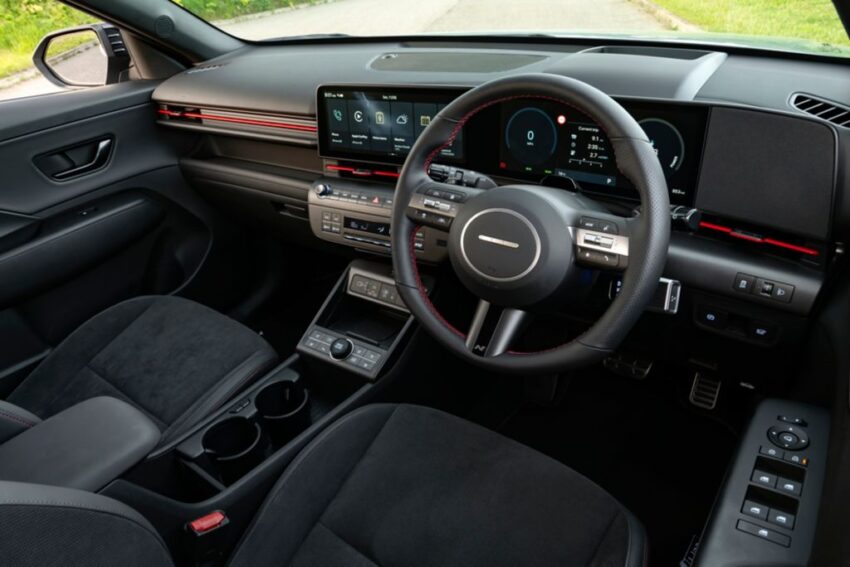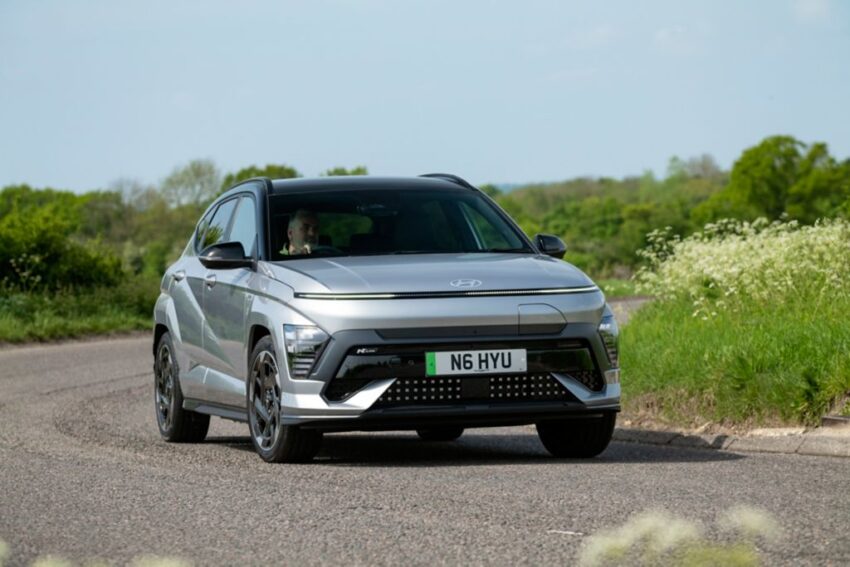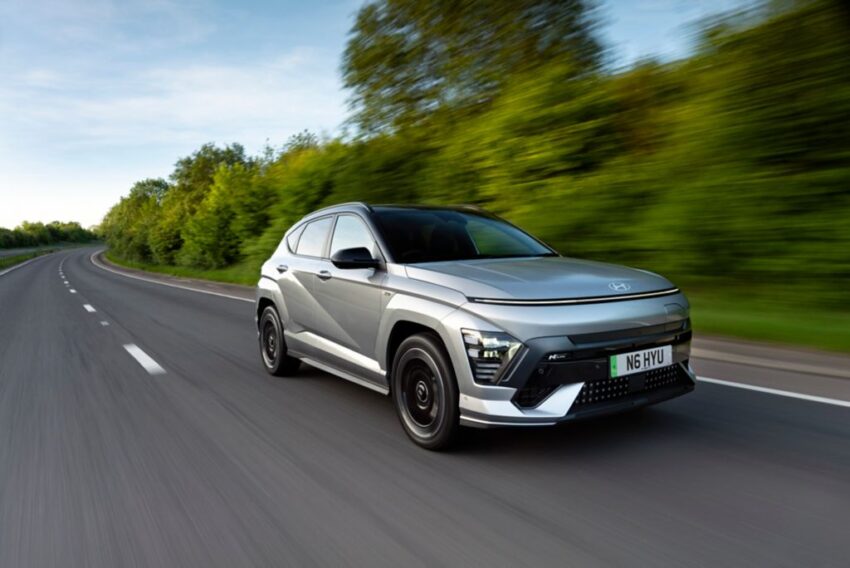Hyundai Kona N Line review: Sensible SUV slips on some sportswear
Does the latest Hyundai Kona continue the brand’s EV brilliance?
Hyundai has been one of the big surprises as we move from ICE to electric power.
The Korean brand started out specialising in value-focused middle-of-the-road vehicles before suddenly stealing a march on pretty much everybody with its shift towards hybrid and electric.
The original Ioniq was fairly groundbreaking but it was the Kona Electric which really stamped Hyundai’s authority, bringing impressive range and performance to the mainstream family market.
Other brands have, of course, caught up, so Hyundai has had to respond with an all-new version of the Kona Electric ready to take on a host of rivals.
The Kona is nominally a B-segment SUV but like so many cars in that class this latest generation has grown. It’s now a realistic competitor for everything from the smaller Jeep Avenger and Smart #1 to the similarly framed Peugeot E-2008, related Kia Niro Electric and larger BYD Atto 3.
Design, interior and technology
As mentioned above, the new Kona is substantially bigger than the first generation. It is 14.5cm longer, with an extra 6cm in the wheelbase, and a couple of centimetres taller and wider than before, offering more presence on the road and more space inside.
It’s also not quite as wild-looking. The first-generation Kona was one of the earliest Hyundais to embrace a more confident, individual design and this new one builds on that but with perhaps a bit more subtlety. The slimline headlights are even slimmer and more neatly integrated with the smoother grille area. Angular elements around the lower grille and running lights have been enhanced and there are sharper body lines along the doors.

On the whole, the changes work but the regular Kona isn’t quite as characterful as before. To help address that, the Kona is Hynudai’s first EV to get the N Line treatment. This sports-inspired spec brings a more aggressive design to the car’s front and rear, including bespoke N Line bumpers. It also adds deeper side skirts and body-colour wheel arch trims sitting above unique 19-inch alloys. Finishing things off are gloss black mirror caps, an optional gloss black contrast roof and a full-width light bar beneath the bonnet. Often such additions make very little difference but with the Kona they give it a noticeable visual lift.
The N Line trim does a similar job inside, where it adds a different steering wheel, metal pedals, and a red contrast element on the seats and dashboard. It’s just as well it does as that stitch is the only splash of colour in an otherwise entirely black car. The seats are black, the headliner is black, the door cards are black. If you’re being generous, you’d call the ugly air conditioning controls gunmetal grey. It all feels well made but something like the Renault Scenic or even the otherwise disappointing Honde e:Ny1 is brighter and more stylish.
Some rivals also offer a little more space. The similarly priced Renault is bigger all round and the Honda offers more rear space in a similar footprint. That said, the Kona is still pretty generous for the class and a family of four will fit comfortably, with plenty of practical storage in the low, open centre console. The 466 litre boot is also pretty decent and puts the Honda, in particular, to shame.
Display-wise, it’s the familiar Hyundai story. Twin 12.3-inch screens handle the instruments and infotainment, and like the Ioniq 5, there’s a massive speaker perched next to the main dials. The central screen is sharp and reasonably easy to navigate and backed up by a welcome array of physical shortcut buttons. You’ll most likely still want to take advantage of the Android Auto or Apple CarPlay connection, though.

Battery, motor and performance
The new Kona is based on the now-familiar E-GMP platform that underpins almost every EV from the Hyundai/Kia group, from the Kia EV3 to the Hyundai Ioniq 6.
The N Line trim doesn’t bring any sportier performance to the Kona, so we get a 215bhp motor at the rear wheels and a 65kWh battery slung under the floor.
That means 0-62mph in 7.8 seconds (normal for the class) and an WLTP-rated 282 miles on a charge. In the real world I saw around 3.4m/kWh which, based on some back-of-an-envelope calculations equates to around 260 miles of range. Driven a little more carefully, I’m sure this could easily be improved – I’ve seen more than 4m/kWh out of larger cars on this platform. Charging via 102kW rapid DC will replenish the Kona from 10-80% in around 41 minutes.
We know Hyundai can do engaging EVs but, on the road, the Kona isn’t one of them. It drives like pretty much every other E-GMP car. It’s not lively or exciting but it is secure, stable, smooth and undemanding. It goes where you want it to go when you ask and has enough punch for day-to-day driving without any pretence of being sporty, even with the sporty trim accoutrements.
That’s not really a criticism – how many people buy a family crossover for edge-of-the-seat thrills? – merely an observation.

Price and specifications
In addition to bespoke styling, the N Line trim also introduces additional equipment including interior ambient lighting, heated seats and steering wheel, a wireless charging pad for phones and a powered tailgate.
That’s on top of the adaptive cruise control, keyless entry, two-zone climate control, heat pump and vehicle-to-load functionality that every Kona gets. The price of that extra kit is £4,400 on top of the Advance entry level, taking the Kona N Line’s price to £40,395.
That’s more than an entry-level Ioniq 5 and perilously close to the Premium-spec Ioniq 5 which offers more space and more kit with a small sacrifice in range. Of course, some buyers will prefer the more compact Kona, which remains well equipped.
Verdict
Overall, the Kona is an easy car to like but a hard one to love. It’s perfectly competent but pretty characterless.
For anyone new to EVs or even looking for their next electric car, the Kona is an easy way into one. It’s spacious, comfortable, has all the features you need, will easily do 230 miles on a charge, and is undemanding, simple family motoring.
It’s just a shame that, even in this sportier N Line trim, it’s a little bit bland.

Hyundai Kona N Line
- Price: £40,395
- Powertrain: single-motor, front-wheel-drive
- Battery: 65.4kWh
- Power: 215bhp
- Torque: 210lb ft
- Top speed: 107mph
- 0-62mph: 7.8 seconds
- Range: 282 miles
- Consumption: 3.7m/kWh
- Charging: up to 102kW






